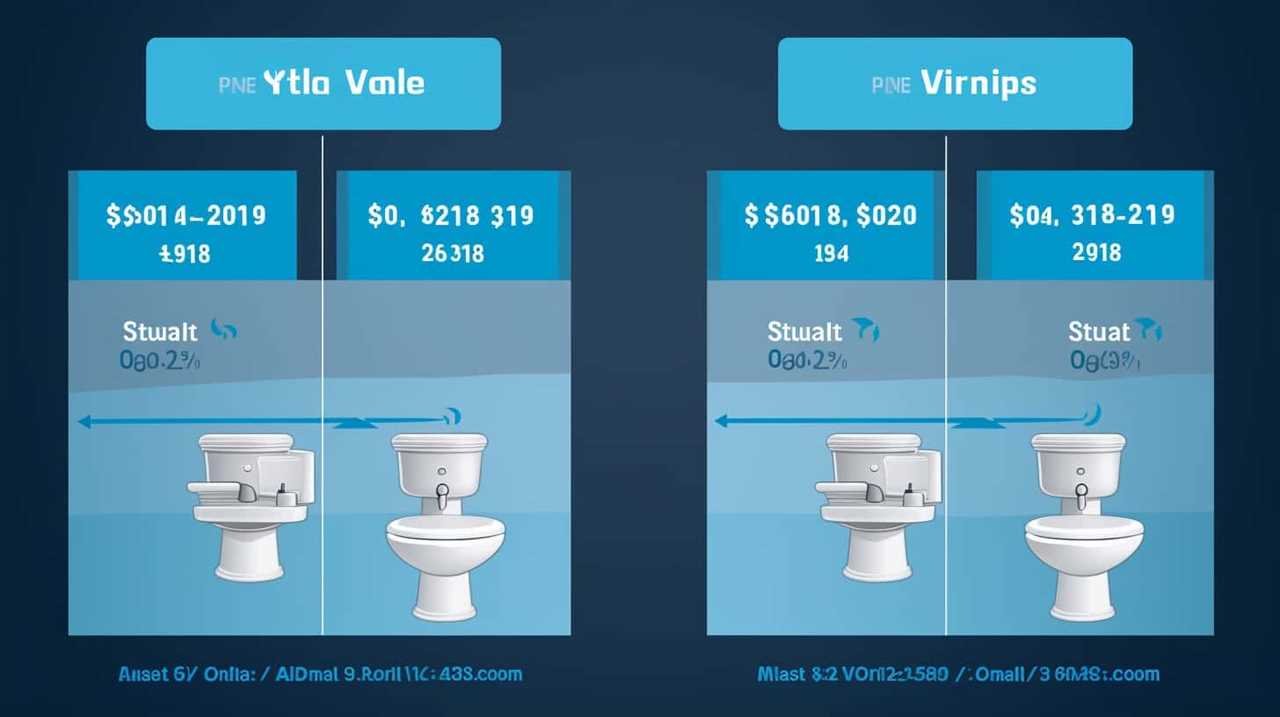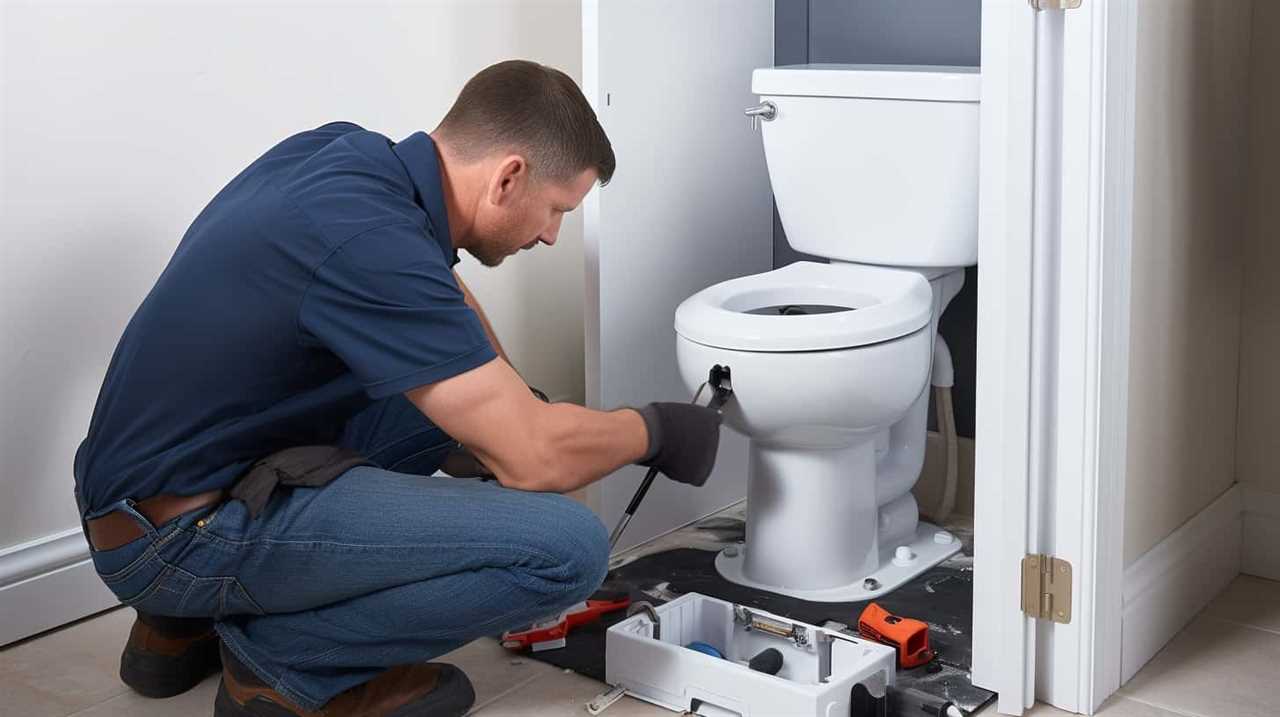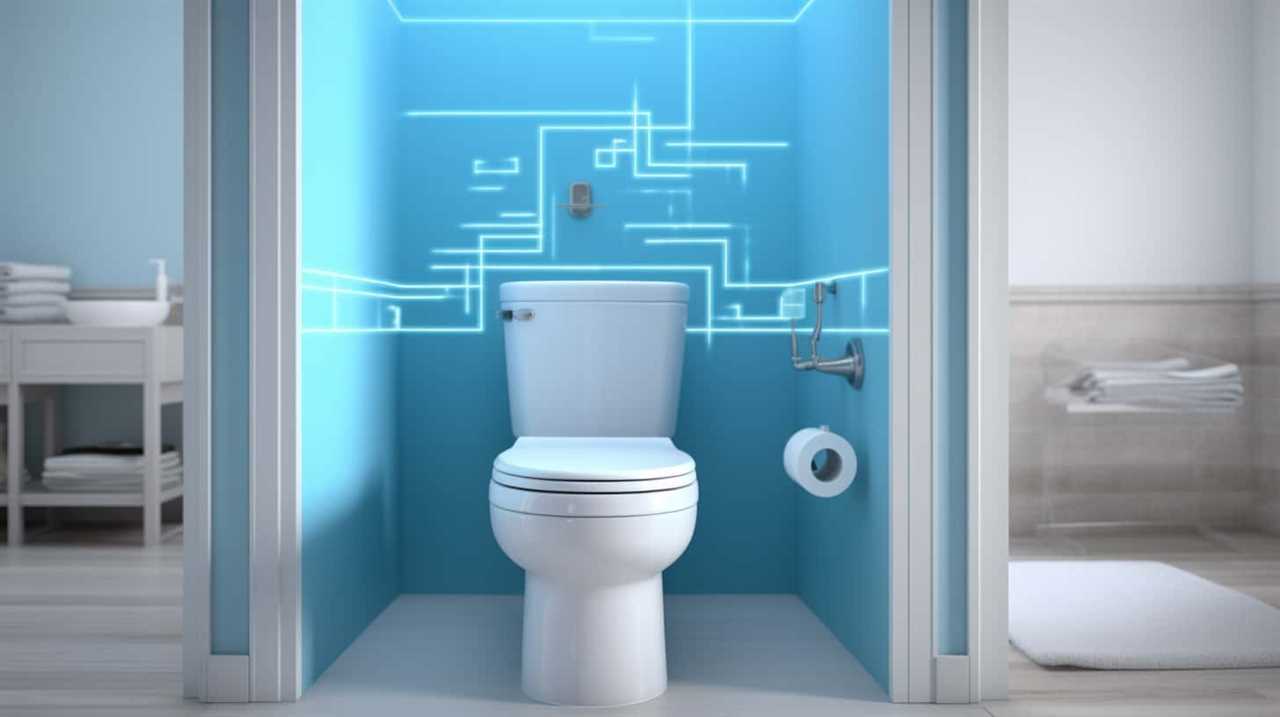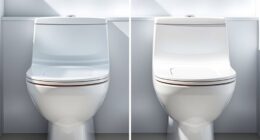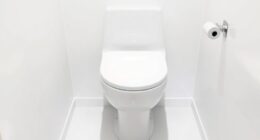Did you know that every day, millions of people flush Kleenex down their toilets, unaware of the potential plumbing problems they may be causing?
In this article, we will debunk common myths surrounding the flushability of Kleenex and shed light on the hidden consequences of this seemingly harmless act.
We will also provide alternatives to flushing and offer tips on how to properly dispose of Kleenex.
By making informed choices, we can contribute to a cleaner and more sustainable future.

Key Takeaways
- Flushing Kleenex can cause clogs and blockages in plumbing systems.
- Kleenex is not designed to break down like toilet paper, leading to potential plumbing problems.
- Flushing Kleenex can have negative environmental impacts, including water pollution and increased strain on sewage treatment.
- Recycling, composting, or disposing of Kleenex in the trash are alternative methods to flushing that can minimize harm and promote responsible waste management.
The Flushability of Kleenex: Debunking Common Myths
To debunk common myths surrounding the flushability of Kleenex, we’ll examine the actual properties and characteristics of the product. Dissecting misconceptions and examining flushability claims is crucial in order to provide accurate information to our audience.
Kleenex is a popular brand of facial tissue that’s designed to provide softness and absorbency for everyday use. However, there’s a common belief that Kleenex can be safely flushed down the toilet like regular toilet paper.
This misconception stems from the fact that Kleenex is made from cellulose fibers, which are similar to those found in toilet paper. However, unlike toilet paper, Kleenex is specifically engineered to retain its strength and absorbency even when wet. This means that when flushed, Kleenex can cause clogs and blockages in plumbing systems.
Understanding the potential plumbing problems associated with flushing Kleenex is essential for maintaining the proper functioning of our toilets and sewage systems.
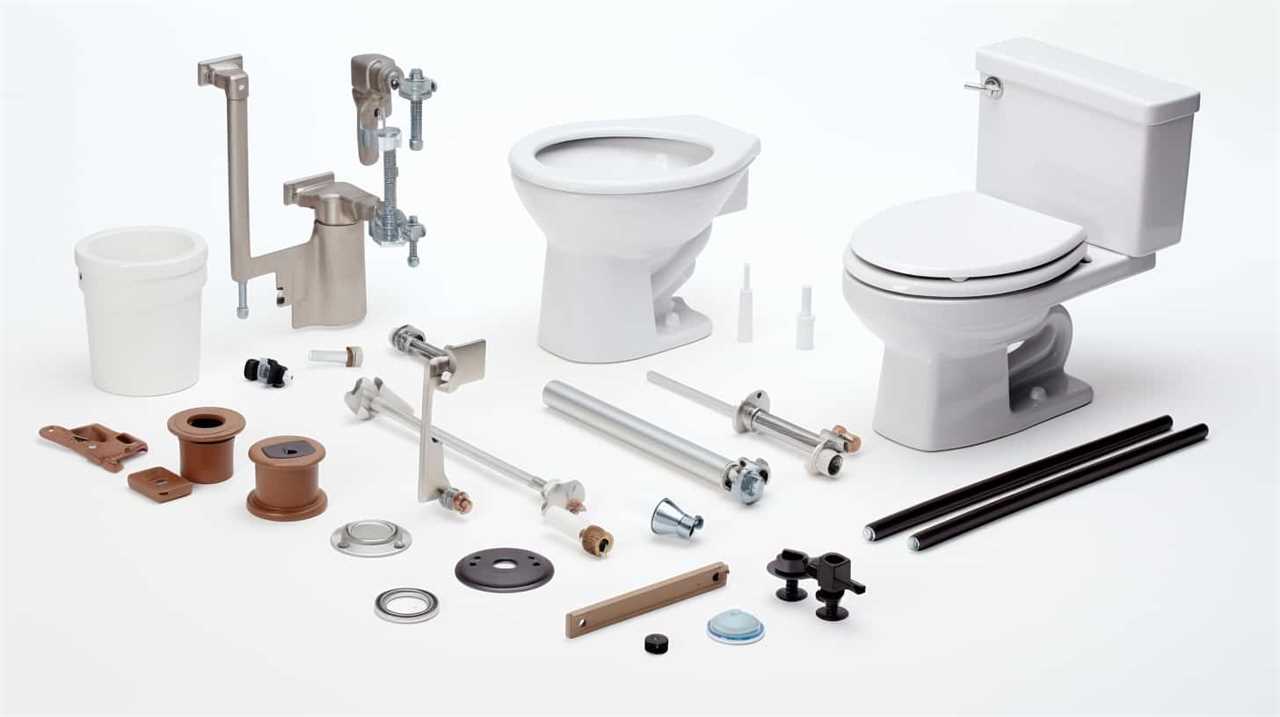
Understanding the Potential Plumbing Problems
Moving forward from the previous subtopic, let us delve into the potential plumbing problems associated with flushing Kleenex. It is important to address common misconceptions surrounding the flushability of Kleenex and understand the potential damage it can cause to your plumbing system.
To provide a visual representation of the potential plumbing problems, we have created a table below:
| Potential Plumbing Problems | Description |
|---|---|
| Clogged Pipes | Kleenex is not designed to break down like toilet paper, leading to potential blockages in the pipes. |
| Backed-Up Toilets | Flushing Kleenex can result in toilet backups, causing inconvenience and potential damage. |
| Sewer Line Damage | Kleenex can accumulate in sewer lines and cause blockages, leading to costly repairs. |
| Septic System Issues | Flushing Kleenex can strain septic systems, potentially leading to system failure and costly repairs. |
Understanding these potential plumbing problems highlights the importance of properly disposing of Kleenex in the trash rather than flushing it down the toilet. By doing so, you can avoid the inconvenience, expense, and potential damage associated with these issues.
Environmental Impact: The Hidden Consequences
The environmental impact of flushing Kleenex down the toilet goes beyond just plumbing problems. Here are four ecological implications and waste management concerns to consider:
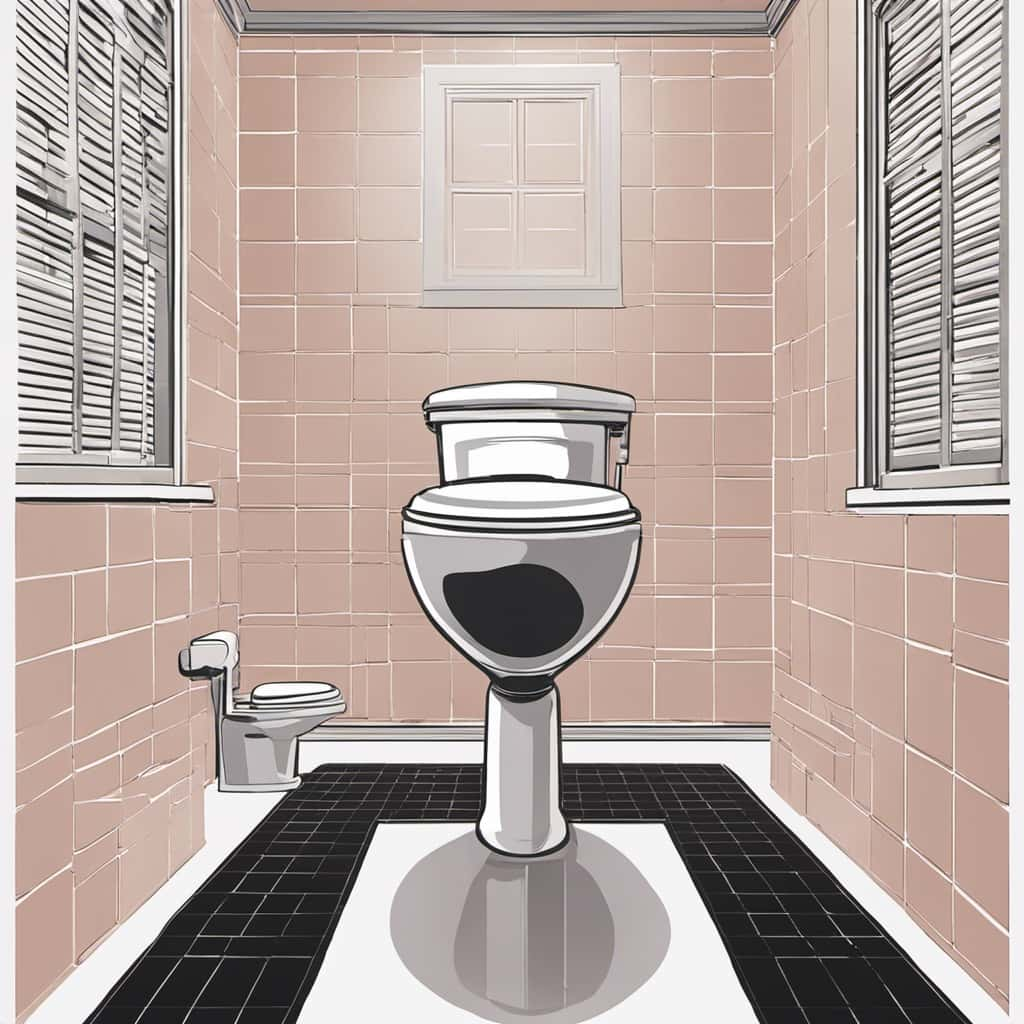
- Water pollution: Flushing Kleenex introduces contaminants into the water supply. The fibers in Kleenex can break down into microplastics, which are harmful to marine life and can accumulate in the food chain.
- Sewage treatment strain: Kleenex can clog pipes and put added pressure on sewage treatment systems. This can result in costly repairs and increased energy consumption.
- Landfill waste: If not properly filtered out, flushed Kleenex can end up in wastewater treatment sludge, which is often disposed of in landfills. This contributes to the growing problem of overflowing landfills and the release of greenhouse gases.
- Resource consumption: Producing Kleenex requires the use of trees, water, and energy. Flushing them down the toilet wastes these resources and contributes to deforestation and greenhouse gas emissions.
Considering these hidden consequences, it’s important to dispose of Kleenex properly in the trash to minimize the environmental impact.
Alternatives to Flushing: How to Properly Dispose of Kleenex
In light of the environmental implications discussed earlier, let’s explore the proper methods for disposing of Kleenex, avoiding any potential harm caused by flushing them down the toilet.
Recycling options are one way to responsibly dispose of used Kleenex. While not all recycling facilities accept tissue paper, some do. Check with your local recycling center to find out if they accept tissue paper for recycling. If they do, make sure to separate the Kleenex from other recyclables and place them in a separate bag or bin.
Another alternative is composting. Kleenex made from 100% natural fibers can be composted along with other organic waste. However, it’s important to ensure that the composting process reaches high enough temperatures to effectively break down the Kleenex. If in doubt, it’s best to dispose of Kleenex in the regular trash.
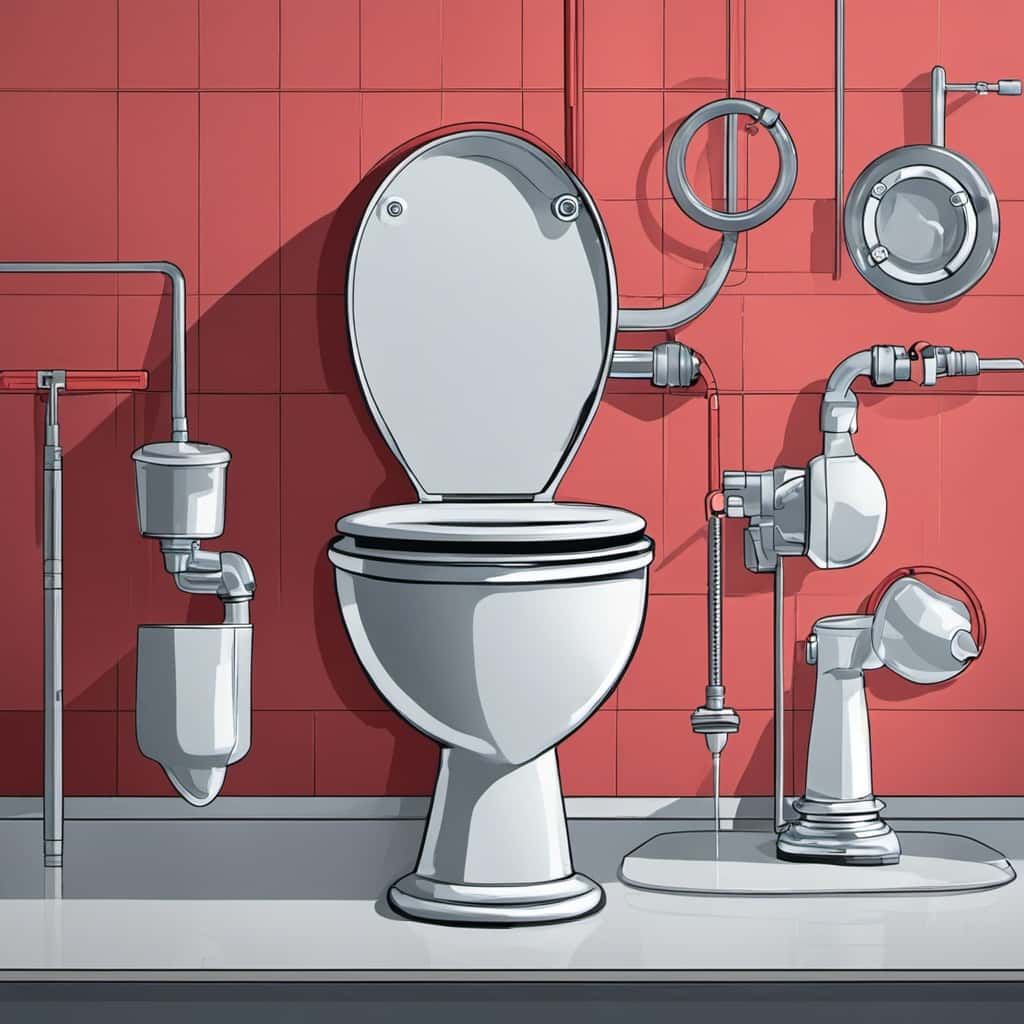
Conclusion: Making Informed Choices for a Cleaner Future
To ensure a cleaner future, we must collectively make informed choices about the proper disposal of Kleenex and other waste products. Here are four key points to consider when making sustainable choices and educating consumers:
- Opt for reusable alternatives: Encourage the use of reusable handkerchiefs or cloth tissues instead of disposable ones. This reduces the amount of waste generated and promotes a more sustainable lifestyle.
- Separate and recycle: Educate consumers about the importance of separating recyclable materials from non-recyclable ones. By properly recycling used tissues and other waste, we can minimize the environmental impact and conserve valuable resources.
- Promote composting: Emphasize the benefits of composting organic waste, including biodegradable tissues. Composting not only reduces landfill waste but also enriches soil health, promoting a circular economy.
- Support sustainable initiatives: Advocate for businesses and organizations that prioritize sustainability in their production and waste management practices. By choosing to support these initiatives, we can encourage others to follow suit and create a cleaner future for all.
Frequently Asked Questions
Can Flushing Kleenex Down the Toilet Cause Clogs in the Plumbing System?
Flushing Kleenex down the toilet can lead to clogs in the plumbing system. It is harmful to septic systems and can cause sewer backups. Proper disposal in a trash can is recommended.
Is It True That Kleenex Is Designed to Disintegrate Quickly in Water?
Flushing Kleenex down the toilet can be harmful to the sewage system and contribute to pollution in water bodies. While Kleenex is designed to disintegrate quickly in water, it is still best to dispose of it in the trash to avoid potential issues.
What Are the Environmental Consequences of Flushing Kleenex Down the Toilet?
Flushing Kleenex down the toilet can have significant environmental consequences. The fibers in Kleenex are not designed to break down easily, leading to clogs in the sewage system and potential harm to aquatic ecosystems.
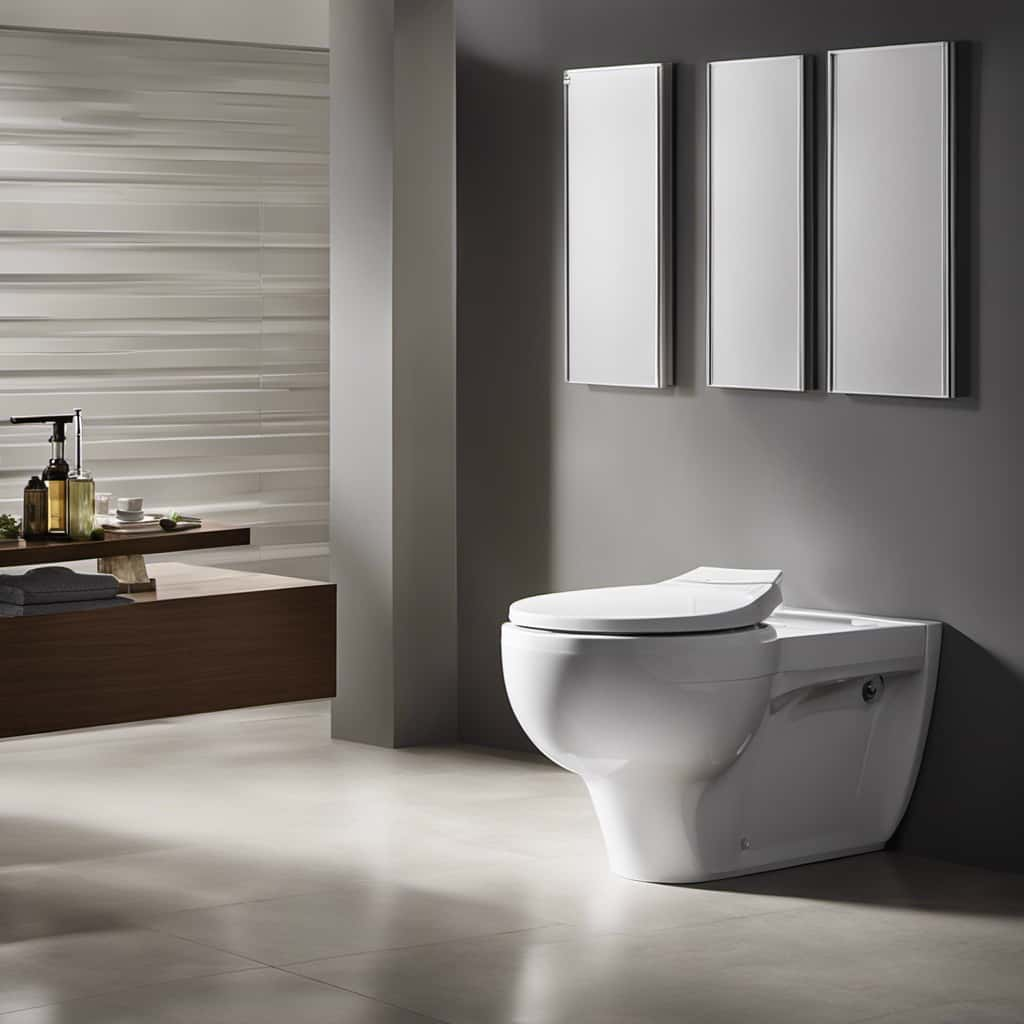
Are There Any Alternatives to Flushing Kleenex That Are More Environmentally Friendly?
When exploring environmentally friendly alternatives and sustainable disposal methods, we find that flushing Kleenex down the toilet is not recommended. It is crucial to consider the potential environmental consequences and opt for more responsible options.
How Can I Properly Dispose of Kleenex Without Flushing It Down the Toilet?
To properly dispose of Kleenex without flushing it down the toilet, we recommend using eco-friendly alternatives such as composting or throwing it in the trash. These methods ensure proper waste management and minimize environmental impact.
Conclusion
In conclusion, it’s crucial to make informed choices when it comes to disposing of Kleenex.
Flushing them down the toilet may seem convenient, but it can lead to potential plumbing problems and have harmful environmental consequences.
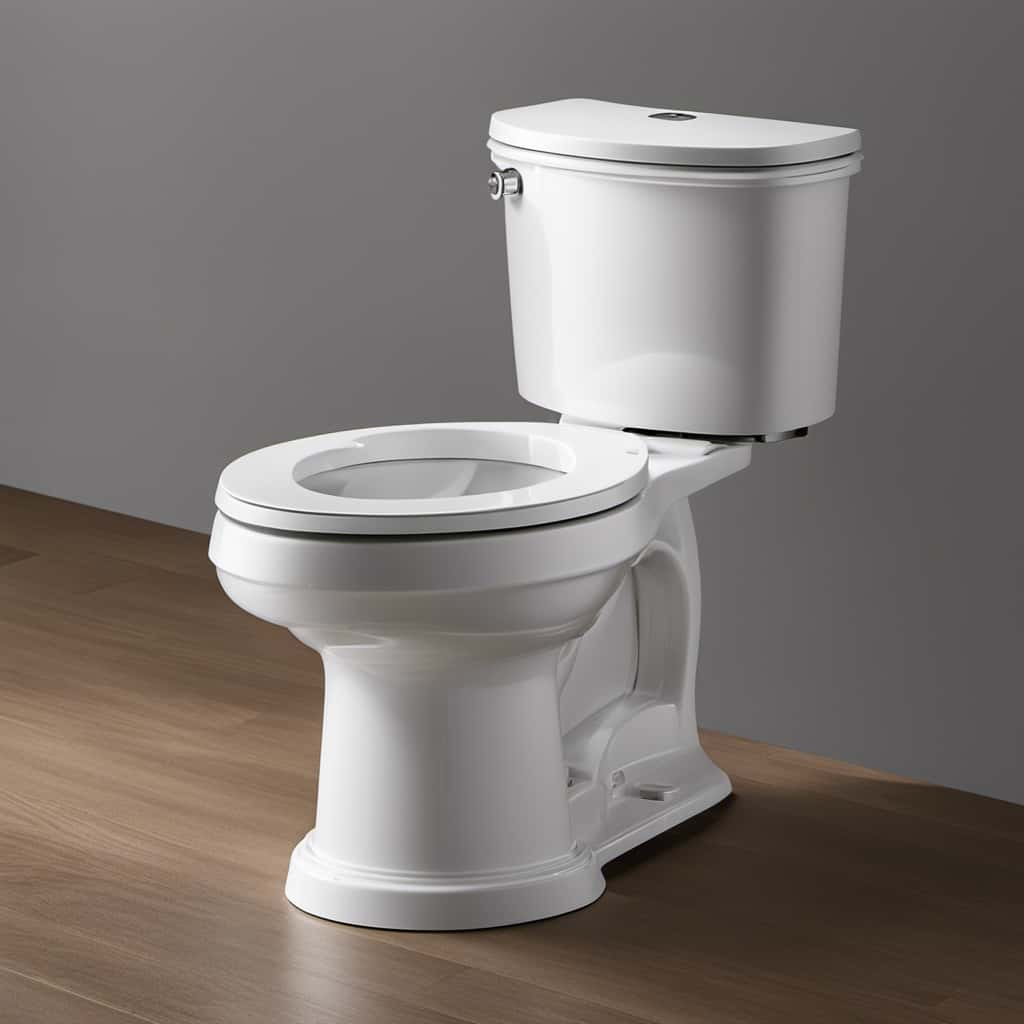
It’s time to break free from the myth of flushability and opt for proper disposal methods.
Let’s strive for a cleaner future by embracing alternatives that protect our plumbing systems and the environment.
Together, we can make a difference and avoid a catastrophe of clogged pipes!
